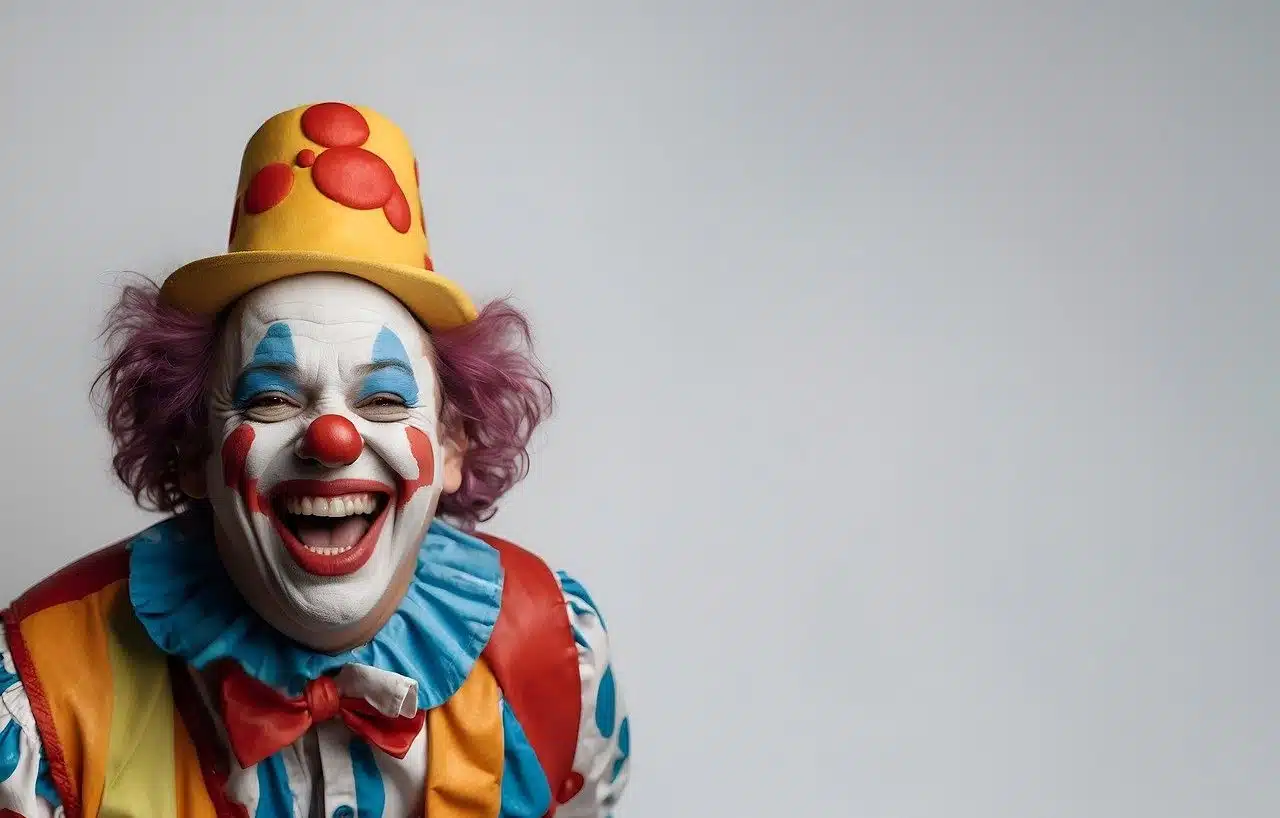
A clown is a comic artist.
Clown is a notion that derives from the Italian language and can be used as a noun or adjective . In the first case, a clown is a type of artist who seeks to entertain the public with certain humorous routines and through their unusual makeup and costumes.
For example: "The clowns and acrobats were the best of the circus" , "The theater company announced the incorporation of the clown Lunarcitos for the summer season" , "The comic actor said that he began his career as a clown, offering a show to the cap on the Atlantic Coast» .
The clown can work in a circus , although there are also those who work in theaters, television programs or even on public roads as street performers. Clowns can tell jokes , juggle, create shapes with balloons ( balloon twisting ), make funny noises, or engage in other actions to generate laughter among the audience.
Clown as an adjective
As an adjective, a person is said to be a clown when they are not very serious or tend to entertain those around them with funny actions or words.
"Don't be a clown, take the tie off your head and get back to work", «Pepe is a clown, you can't be serious with him»y «My father was quite a clown at home, but he became very formal and circumspect when he entered his office» son expresiones que muestran este uso del tèrmino.

The evil clown character usually provokes terror.
Coulrophobia
Because the clown's true identity is hidden behind makeup and costume, many people are afraid of these characters. The phobia (irrational fear) generated by clowns is known as coulrophobia (the prefix coulro- derives from Greek and can be translated as "someone who walks on stilts" ; the reason is that ancient jesters used stilts).
Although it is believed that clown phobia mainly affects children, in reality it can also occur in adults. Curiously, many coulrophobia patients express that what scares them most about clowns is the excess makeup, hair color, and the typical red spherical nose. Most people acquire this phobia after having had a negative experience with a clown in person (something that can happen at a fair in childhood, for example) or after having seen an image of a sinister clown.
The clown in Stephen King 's novel "It" contributed considerably to fueling his figure as the object of childhood fears. This work often comes up in conversations with therapists when looking for the origin of clown phobia; and it is no wonder, since he is a sinister character who frightens a group of children and causes them lifelong trauma.
Some studies on coulrophobia indicate that children do not appreciate seeing a seemingly normal body with a face that is not familiar or easy to understand. It has also been shown that children are frightened by images of clowns in hospitals.
Examples of scary clowns
Let's see below some of the most famous scary clowns:
- Pennywise , the monster from the aforementioned novel "It" , which was brought to the big screen to terrorize more than one generation.
- Captain Spaulding , character from "House of 1000 Corpses" , a film in which he plays the role of the main antagonist. His face is white; his lips, black; His eyes, combining black and blue, cast a penetrating and sinister look; A black beard and unpleasant teeth complete the terrifying picture of this clown.
- Joker , one of Batman 's enemies. His original name is Joker and he is a ruthless killer who enjoys spreading terror in the city.
